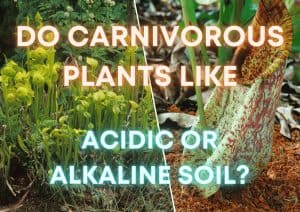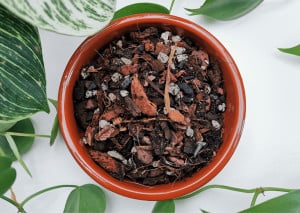Can I Use African Violet Soil For Christmas Cactus?
- Lakeisha Ethans
- June 20, 2022
If you buy something using the retail links in our articles, sometimes we earn a small affiliate commission. This does not impact the products we recommend.
It’s quite common for plant-specific soil mixes to be pre-made and sold commercially to ease the process of creating the aforementioned growing conditions.
One of these is African violet soil. African violets are notoriously delicate, so correctly made soil for these plants is often highly suitable for many plants with similar needs.
But can it be used for a Christmas cactus?
You can certainly use African violet soil to pot up Christmas cacti. Christmas cacti thrive in soil that has very good drainage and is slightly acidic, both needs which are met well by African violet potting mixes which are notably porous and have a pH of around 6 – 7.
However, there are still ways to improve the violet soil mixture in ways that better suits cacti, and that’s what we’re going to cover here.
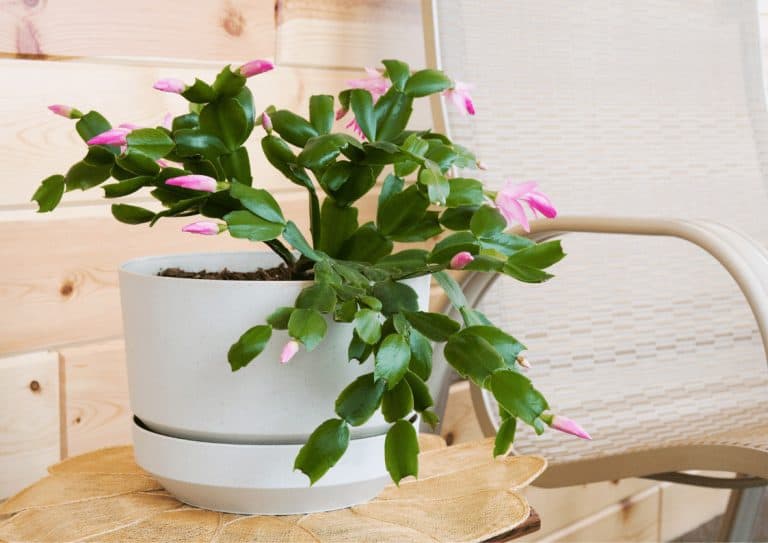
What are the most important factors of soil for a Christmas cactus?
Christmas cacti are epiphytes, so they grow on trees in the wild. This can make it difficult to determine exactly what type of soil they need, as they don’t use soil naturally.
The most important thing to keep in mind when sourcing soil for Christmas cacti is drainage. Free-draining soil is highly recommended. This is because, as an epiphyte, a Christmas cactus gains moisture from the air around it as opposed to from the ground or from the tree it is attached to.
Christmas cacti are also often found at high altitudes, ranging from 2,300 feet to 9,120 feet, depending on the species. This means they tend to dry quickly and don’t experience lingering moisture for very long. As such, soil for a Christmas cactus has to be able to dry out easily to prevent issues like root rot.
Another factor to remember is the pH level. A Christmas cactus prefers slightly acidic soil, ranging from 5.5 to 7. This can sound counterproductive since alkaline soil is often very porous, but this porosity makes it less soluble, thus preventing the absorption of nutrients.
Christmas cacti need acidity to ensure healthy and full growth or they will become stunted. Remember that you need to account for the pH of any added fertilizers that you may choose to use!
In the wild, Christmas cacti gain nutrients from falling or decomposing parts of a plant, which they can draw sustenance from for as long as they please. This is why retention of nutrients matters and slightly acidic soil is the way to go.
The trick, then, is ensuring soil that retains nutrients while also being quick to dry and release moisture.
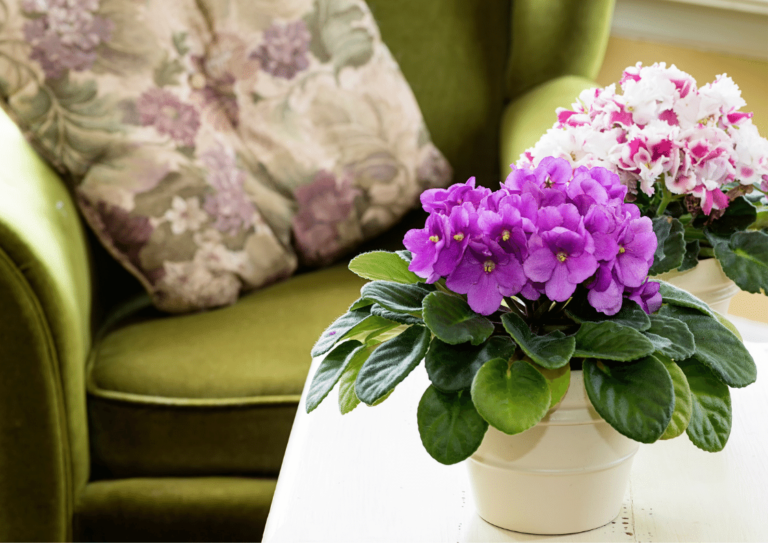
What is the composition of African violet soil?
There are a wide variety of African violet soil mixes available on the market, but they share numerous features in common that can make them interchangeable so long as the basic requirements are met.
African violet soil makes use of a mixture of two parts peat moss, one part perlite, and one part vermiculite. Sometimes, the peat moss is swapped out for coconut coir or wood fiber for a more environmentally friendly option. Regardless, this soil is meant to have a slightly acidic pH level of between 6.0 and 6.9.
Peat moss is a kind of compost harvested from decaying peat bog plants with high acidity and the ability to hold moisture and structure well. It retains nutrients and can release that and moisture at a slow, reliable rate.
Perlite is a type of material made from glass heated at volcanic levels that has a popcorn-like texture, boosting humidity by releasing moisture that keeps plants hydrated without waterlogging. This creates a jungle-like environment.
Finally, vermiculite is an inert material that you can find easily sold in a pellet-like form. It neither molds nor rots and helps to ensure sterile soil while retaining nutrients easily, especially things like calcium and ammonium. It’s also great for root anchorage.
This mixture works well for Christmas cacti, as it meets the requirements of good drainage and aeration without nutrition loss and slight acidity.
If you already have African violet soil, you can use it directly with a Christmas cactus with no issue.
Our Favorite Houseplant Soil Mixes And Substrate
What is the best soil for a Christmas cactus?
The guaranteed way to ensure good soil for your Christmas cactus is by making your own by hand. There are, of course, readily available cactus soil mixes on the market, and African violet soil will work, too.
However, if you’re going for the very best soil possible, mix your own so you know for sure what’s going into it!
The most optimized soil mixture involves equal parts sterilized soil, compost material, and inert material such as gravel or sharp sand. This creates a highly nutritious, humus-rich mixture with good drainage and aeration that mimics the composted tree leaves that serve as a Christmas cactus’ natural “soil” in their home rainforests.
Sterilized soil will be free from most pests and fungi, which double ensures a Christmas cactus’ health, as the plant is already quite resistant to all but a few potential pests. You can opt to use soil from your garden for this purpose, though you’ll need to make adjustments depending on the soil’s composition.
For example, highly sandy garden soil will usually need the addition of only plain organic matter because it is already porous. Meanwhile, clay-filled garden soil will need a high volume of coarse inert materials, like grit or beads, to make up for the lack of aeration of the clay.
You should also make sure to thoroughly sterilize garden soil to avoid the transfer of fungi.
Sterilization of soil can be done through a heating, and pasteurizing process, where the soil temperature is raised to 160 degrees for a half-hour period. This can cause an unpleasant smell at first, so it’s highly advised that this heating is done outdoors.
But what about compost material? Are there any specific requirements?
The short answer is no! This can be anything from leaf mold to peat, as long as the compost is well-decomposed when mixed in. The goal is to provide nutrients that are easily accessible to the root system. This helps with overall plant health and may even prevent your Christmas cactus flowers from changing color.
If you want something easier, you can simply mix three parts regular potting soil mixture with two parts perlite, adding either limestone or coffee grounds as needed for better acidity. While not the most optimal, it’s a good enough mix for those who want something faster and simpler and will promote healthy Christmas cactus growth.
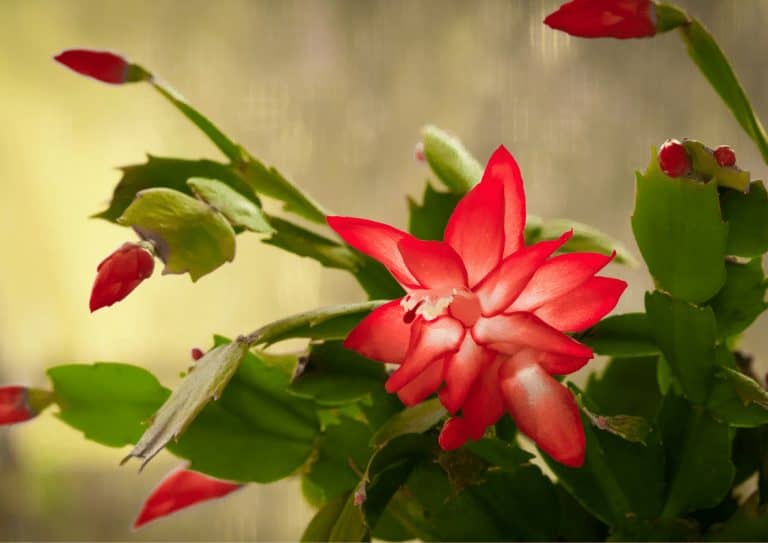
Take home message
Christmas cacti can easily use African violet soil without issue because the soil has a slightly acidic pH level and good aeration and drainage, which is all the former plant needs to thrive. As long as the soil retains nutrients, doesn’t hold onto too much moisture, and is acidic enough for health, you’re in the green.
With that being said, the most optimal soil for a Christmas cactus will always be one that you curate specifically for it. If you’re looking to invest a lot of time and effort into breeding Christmas cacti specifically, it’s probably best to use a custom mix that suits the flora’s exact needs.

Lakeisha Ethans
Houseplant Writer
Mother to two humans and hundreds of plant babies. Lakeisha uses her 15 years of experience as a content writer to specialise in simplifying what you need to know to grow and care for all indoor plants.
Similar Posts
Do Carnivorous Plants Like Acidic or Alkaline Soil?
Carnivorous plants are used to growing in tough, hostile natural environments. How does that affect their needs in terms of soil pH levels?
The Best Soil Mix For Philodendron Xanadu (Soil Recipe)
The perfect soil mix for Philodendron xanadu provides water retention, aeration and nutrition. We explore what ingredients provides these qualities best.

